Yes, LASIK surgery is allowed for CDS (Combined Defence Services) entry under certain conditions.
However, candidates must meet specific medical standards and procedural criteria depending on the branch of service they are applying for.
For aspiring CDS candidates or military hopefuls, understanding whether LASIK or equivalent keratorefractive surgery impacts your eligibility is crucial. This blog provides a detailed analysis of LASIK’s permissibility across the Army, Navy, and Air Force entries under CDS, along with the associated medical conditions.
LASIK and Medical Eligibility for CDS
LASIK or keratorefractive procedures can correct refractive errors, dramatically improving vision. However, in the highly rigorous environment of military services, certain medical and operational standards must be met to ensure suitability for military duty.
Here’s a breakdown of how LASIK applies to CDS across the three arms of the military:
1. LASIK Guidelines for Army Entries under CDS
LASIK is allowed for certain Army officer entries under CDS, provided specific eligibility criteria are met.
Candidates applying for graduate, post-graduate, and equivalent entries (including CDSE, IMA, OTA, UES, NCC, TGC, JAG, AEC, APS, and similar categories) may undergo LASIK. However, the following key conditions apply:
- Age at Surgery: Candidates must be over 20 years old at the time of LASIK.
- Post-Surgery Recovery Time: At least 12 months must have passed since the surgery.
- Corneal Thickness: A central corneal thickness of 450 microns or more is mandatory.
- Axial Length: The axial length of the eye should not exceed 26 mm.
- Residual Refractive Error: Must be within +/- 1.0 D, including cylindrical corrections.
- Retinal Health: A normal, healthy retina is required.
- Documentation: A certificate or operative notes from the medical centre where surgery was performed must be provided. If absent, candidates may be declared “Unfit due to undocumented Visual Acuity corrective procedure.”
However, radial keratotomy (RK) is permanently disqualifying.
Candidates applying for special undergraduate entries like NDA or 10+2 TES are not permitted to undergo LASIK surgeries for eligibility.
2. LASIK Rules for Navy Entries under CDS
The Navy allows candidates with LASIK or equivalent procedures for most branches under CDS, with a few notable exceptions. Candidates applying for submarine, MARCO, and diver cadres will NOT be considered fit if they have undergone LASIK or equivalent surgeries. For all other branches, LASIK is permissible under the following conditions:
- Age at Surgery: LASIK must not be performed before the age of 20 years.
- Post-Surgery Time: A minimum of 12 months must have passed before the medical examination.
- Residual Refraction: The residual refraction post-surgery should be less than or equal to +1.0 D (Spherical or Cylindrical), within the permissible limit for the selected category. For Pilot and Observer entries, residual refraction must be nil.
- Pre-Operative Refractive Error: Candidates should not have had a pre-operative refractive error exceeding +/- 6.0 D.
- Corneal and Axial Standards:
- Central corneal thickness should measure 450 microns or more.
- Axial eye length must not exceed 26 mm.
- Retinal Health: The retina must be in normal, healthy condition.
- Certificate Requirement: A document from the surgical centre mentioning the type of surgery, date, and pre-operative refractive error must be presented.
Candidates who have undergone radial keratotomy surgeries (RK) are permanently ineligible for all branches of the Navy.
3. LASIK for Air Force Entries under CDS
LASIK surgeries are permissible in the Air Force under CDS for most branches, following stringent guidelines. Certain disqualifications based on refractive errors or types of surgery apply. Find the criteria below:
Fit Criteria:
- Visual Requirements: Candidates must meet established visual standards for their selected Air Force branch in accordance with Appendix D of medical guidelines.
- Age Limitation: LASIK should not have been performed before 20 years of age.
- Recovery Period: Post-LASIK, there must be a minimum gap of 12 months with no complications or residual effects.
- Residual Visual Error: Refraction post-surgery should not exceed +/- 1.0 D for branches where corrective errors are allowed.
- Corneal Thickness: Central corneal thickness must measure at least 450 microns.
- Axial Length of Eye: Axial length must not exceed 26 mm.
- Healthy Retina: A normal retinal examination is mandatory.
Unfit Criteria:
- Candidates with high refractive errors (greater than 6 D) before LASIK are permanently unfit.
- Radial Keratotomy (RK) disqualifies all candidates across all branches.
Why Are These Restrictions in Place?
Military standards for vision are stringent because clear and precise eyesight is critical for operational duties such as target acquisition, navigation, and communication. Keratorefractive procedures like LASIK can compromise certain structural qualities of the eyes, which may not fully withstand high-altitude, underwater, or combat conditions. Ensuring the integrity of an individual’s eyesight under such circumstances is vital.
Documentation and Medical Examination
Any candidate who has undergone LASIK must produce a certificate or operative notes from the surgical centre where the procedure was performed. Failure to provide this documentation could result in disqualification.
During the routine medical examination, ophthalmologists may conduct keratometry and pachymetry tests to confirm compliance with required standards.
Key Takeaways for CDS Aspirants
- LASIK is allowed for certain CDS entries, but the surgery must meet strict medical and procedural standards.
- The Army, Navy, and Air Force have individual guidelines that candidates must adhere to.
- Radial keratotomy is permanently disqualifying, regardless of the branch.
If you’re considering LASIK or have already undergone the procedure, ensure that it aligns with the necessary criteria for eligibility in your targeted branch of service. It is essential to undergo the surgery at a reputed eye centre, maintain all required documentation, and allow sufficient recovery time before your medical examination.
Prepare for CDS with Vision in Mind
The path to serving your nation is honourable and challenging. While LASIK opens up opportunities for those with refractive issues, it’s vital to carefully evaluate these guidelines to ensure you’re eligible. We recommend consulting with military ophthalmologists early in the recruitment process to understand your specific case better.
Still have questions about eligibility or visual requirements? Reach out to a qualified military recruitment medical expert. Your vision is our focus!


